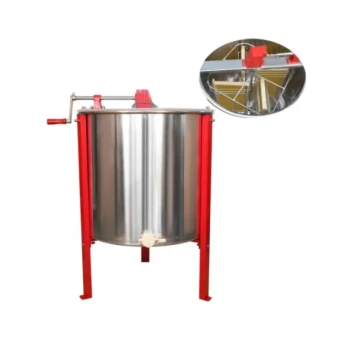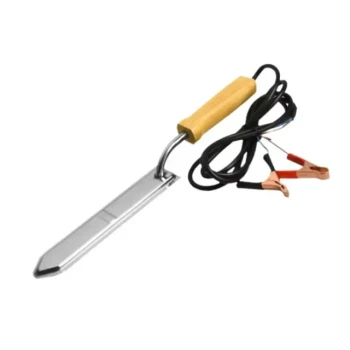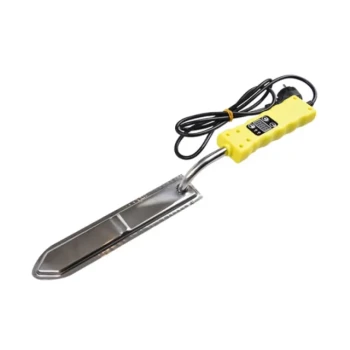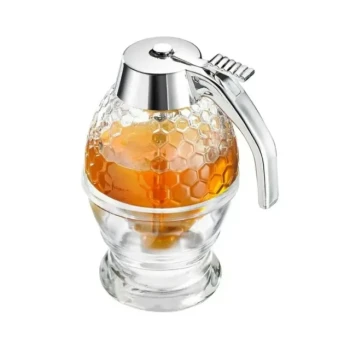The fundamental reason bee removal is easier from honey supers is a direct result of the honeybee colony's sophisticated social structure. The hive is functionally divided into a bustling nursery and a quiet pantry, and the vast majority of bees are dedicated to tending the young in the nursery, not guarding the pantry.
A honeybee hive operates with a clear division of space and labor. The brood nest is the colony's core, housing the queen and her young, demanding constant attention from thousands of nurse bees. Honey supers, in contrast, are merely food storage, visited far less frequently.
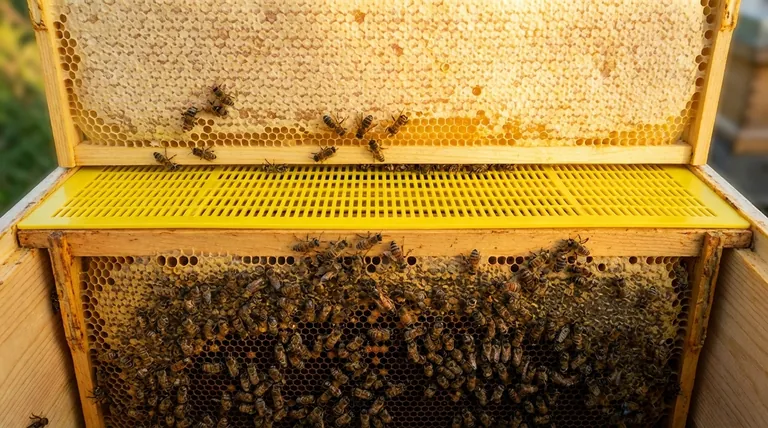
The Hive's Division of Labor: Nursery vs. Pantry
A bee colony allocates its workforce with incredible efficiency. Understanding this division between the brood nest (the brood boxes) and the honey supers is the key to understanding bee behavior during a harvest.
The Brood Nest: The Colony's Hub
The brood nest is the heart of the colony. It contains frames of brood—the eggs, larvae, and pupae that represent the colony's future.
This area is densely populated for two critical reasons. First, the queen resides here, constantly laying eggs. Second, thousands of nurse bees are always present, tasked with feeding the larvae and maintaining the precise temperature and humidity the developing brood requires.
The Honey Super: The Strategic Food Reserve
Honey supers are placed on top of the brood boxes with one purpose: to store excess honey. This is the bees' food reserve for winter or periods of nectar scarcity.
While foragers bring nectar to this area, their presence is transient. They deposit their load and leave. The population of bees in the supers at any given moment is a fraction of that in the brood nest below.
The Role of the Queen Excluder
Many beekeepers intentionally enforce this division by using a queen excluder. This is a screen with gaps large enough for worker bees to pass through but too small for the larger queen.
Placing an excluder between the brood boxes and the honey supers guarantees that no eggs will be laid in the honey frames. This solidifies the super's role as a pure storage area, free of the brood that commands the most intense bee attention.
Understanding the Behavioral Differences
The function of each hive area dictates the bees' behavior within it. This directly impacts the ease of removal.
High Tenacity on Brood Combs
Bees are instinctively and fiercely protective of their brood. It is the single most valuable asset for the colony's survival.
When you handle a brood frame, the bees are reluctant to leave. Their primary impulse is to cover, warm, and defend the vulnerable larvae and pupae. Shaking or brushing them off is met with more resistance.
Lower Attachment to Honey Frames
Bees on honey frames do not exhibit this same defensive tenacity. While they will defend the hive as a whole, their attachment to any specific honey frame is much lower.
These bees are more easily persuaded to move. A firm shake or gentle brushing is usually sufficient to clear a frame, as they have no brood to protect there. This makes the process of harvesting honey significantly faster and less disruptive.
Common Pitfalls to Avoid
Understanding this distinction helps avoid common beekeeping mistakes that disrupt the colony and complicate your harvest.
Harvesting Brood Frames
A beekeeper should never intentionally harvest frames containing brood. Doing so removes the next generation of bees from the colony, severely weakening it. It also introduces larval remains and other impurities into the honey during extraction.
Working Without a Queen Excluder
While not essential, forgoing a queen excluder increases the risk of the queen moving into the supers and laying eggs. This turns your "pantry" into an extension of the "nursery," making a clean harvest far more difficult. If you find brood in your supers, you must ensure those frames are returned to the brood box.
Overly Aggressive Removal
Even on honey supers, using overly aggressive methods can trigger a defensive response. A calm and efficient approach, using tools like a bee brush or a bee escape board, works with the bees' natural tendencies and keeps the process peaceful.
Making the Right Choice for Your Harvest
Your approach to hive management directly influences the ease of your honey harvest. By aligning your strategy with the natural organization of the colony, you can make harvesting a smooth and efficient process.
- If your primary focus is a fast and clean harvest: Use a queen excluder to create a distinct and guaranteed separation between the brood nest and honey supers.
- If your primary focus is minimizing colony stress: Utilize a bee escape board, which allows bees to leave the supers overnight at their own pace before you collect them.
- If you find brood in your honey supers: Stop and move those frames down into the brood box; they are not suitable for harvest and are vital for the colony's health.
Understanding the hive's social structure is the key to working in harmony with your bees, making every task from inspection to harvest more effective.
Summary Table:
| Factor | Brood Combs | Honey Supers |
|---|---|---|
| Primary Function | Nursery (brood rearing) | Pantry (honey storage) |
| Bee Population | High (nurse bees, queen) | Low (transient foragers) |
| Bee Tenacity | High (protective of brood) | Low (easily persuaded to move) |
| Recommended Tool | Minimal handling | Bee brush, bee escape board |
Ready to make your next honey harvest faster and less stressful?
As a commercial beekeeper or distributor, efficiency is paramount. HONESTBEE supplies the durable, wholesale-focused beekeeping equipment you need to work in harmony with your bees' natural behavior. From reliable queen excluders that ensure a clean super to gentle bee brushes for easy removal, our products are designed to support your operation's success.
Contact our expert team today to discuss your specific needs and discover how our wholesale solutions can enhance your harvest efficiency and protect your valuable colonies.
Visual Guide
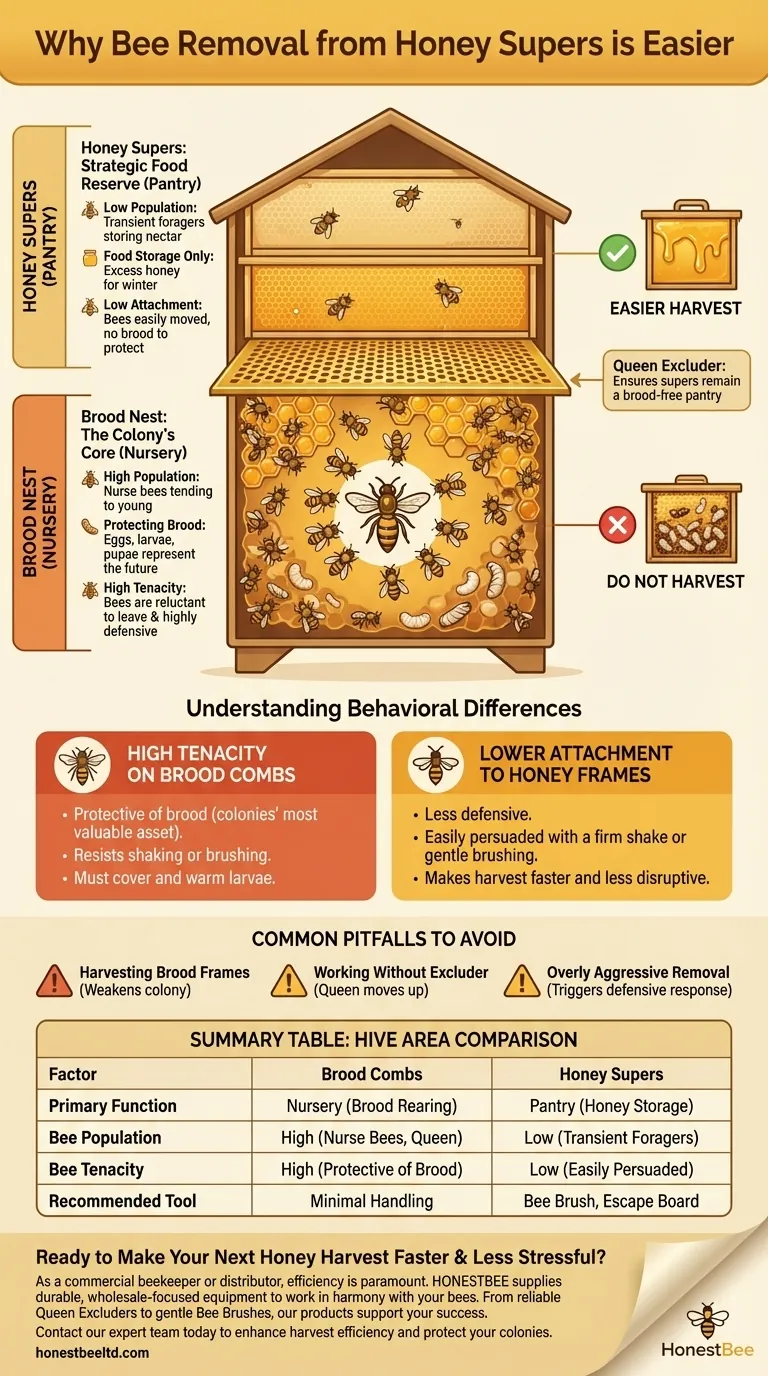
Related Products
- Professional Plastic Queen Excluder for Modern Beekeeping
- Premium Wood Framed Metal Wire Queen Bee Excluder
- Plastic Queen Bee Excluder for Bee Hive Wholesale
- High Performance Plastic Queen Excluder for Beekeeping and Apiary Management
- Metal Queen Bee Excluder for Beekeeping
People Also Ask
- What is a Queen Excluder and how does it work? Achieve Purer Honey & Better Hive Control
- How does a queen excluder work? Master Hive Management for Pure Honey Harvests
- What is the purpose of a queen excluder when adding a super? Streamline Your Honey Harvest
- What are the main advantages of using a queen excluder in beekeeping? Simplify Hive Management & Harvest
- What are the pros of using a queen excluder? Boost Hive Control & Honey Quality






